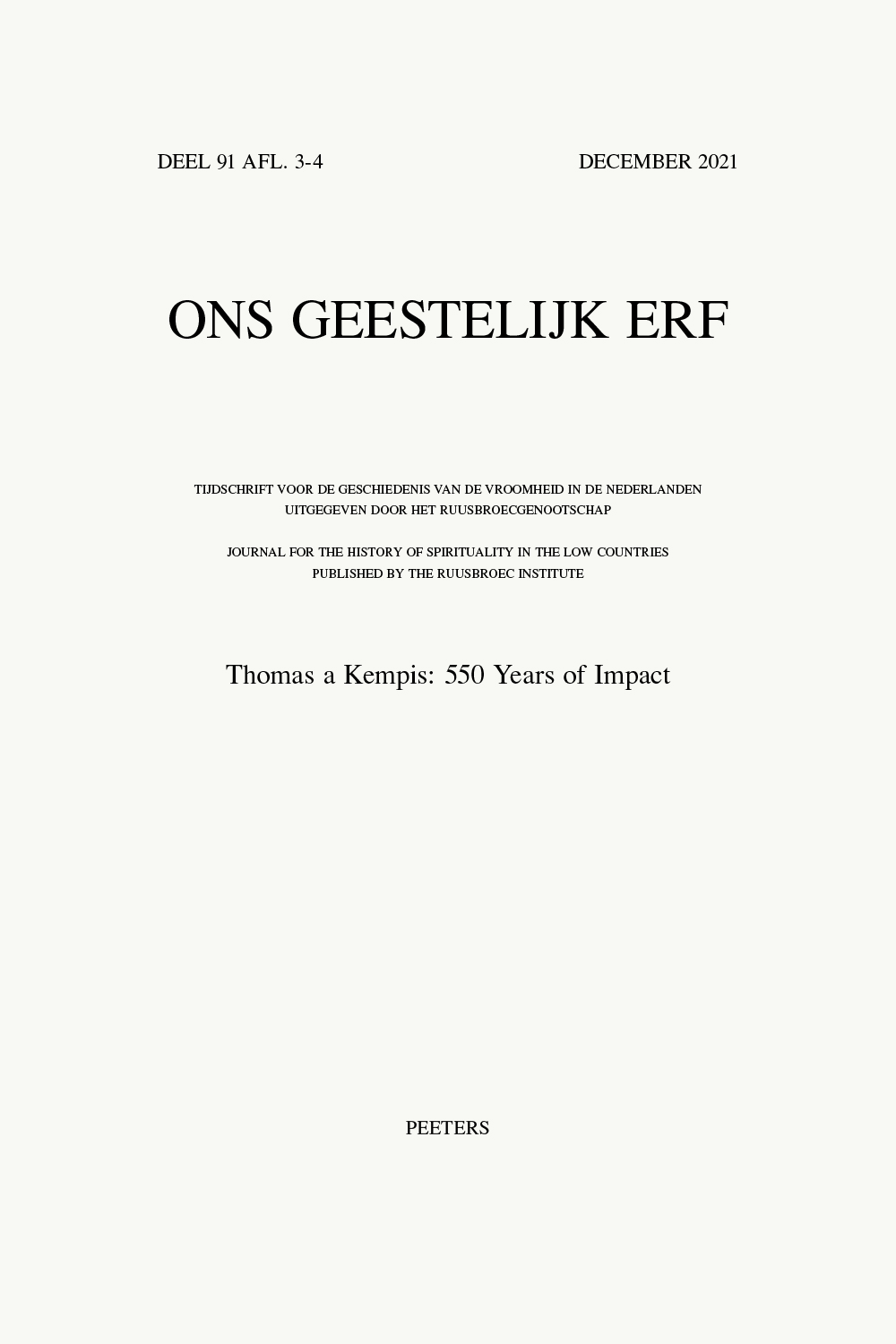 previous article in this issue previous article in this issue | next article in this issue  |

Preview first page |
Document Details : Title: Tauler Reception in Religious Lyric Subtitle: The (pseudo)-Tauler Cantilenae Author(s): SUERBAUM, Almut Journal: Ons Geestelijk Erf Volume: 84 Issue: 1 Date: Maart 2013 Pages: 41-54 DOI: 10.2143/OGE.84.1.2975522 Abstract : Because the so-called Tauler cantilenae are considered inauthentic, they have received little critical attention. The current article argues that such focus on authenticity is a reflex of modern notions of authorship and obscures important aspects of late-medieval literary practice. In the case of the cantilenae, the Cologne Tauler print is the first to attribute these texts to Tauler and to group them together as a coherent oeuvre. Yet an analysis of the textual transmission highlights that some of the individual songs were well-known in the fourteenth century – not just in south-west Germany, as previously assumed, but also in the north. This points to the significance of lyric forms in the appropriation of theological concepts which are at the heart of Tauler’s sermons. At the same time, the grouping of songs in the Cologne Tauler print differs significantly from late-medieval song-manuscripts, which bring together strophic texts of much more disparate character. It is argued that the Tauler cantilenae display a common interest in the need to transcend the senses, and in the limitations of human language. While attribution to Tauler is therefore not an indication of historical authorship, it indicates a mode of reception in which thematic coherence, but also a focus on the ‘I’ of the singer, form the basis of contemplative practice. |
|


